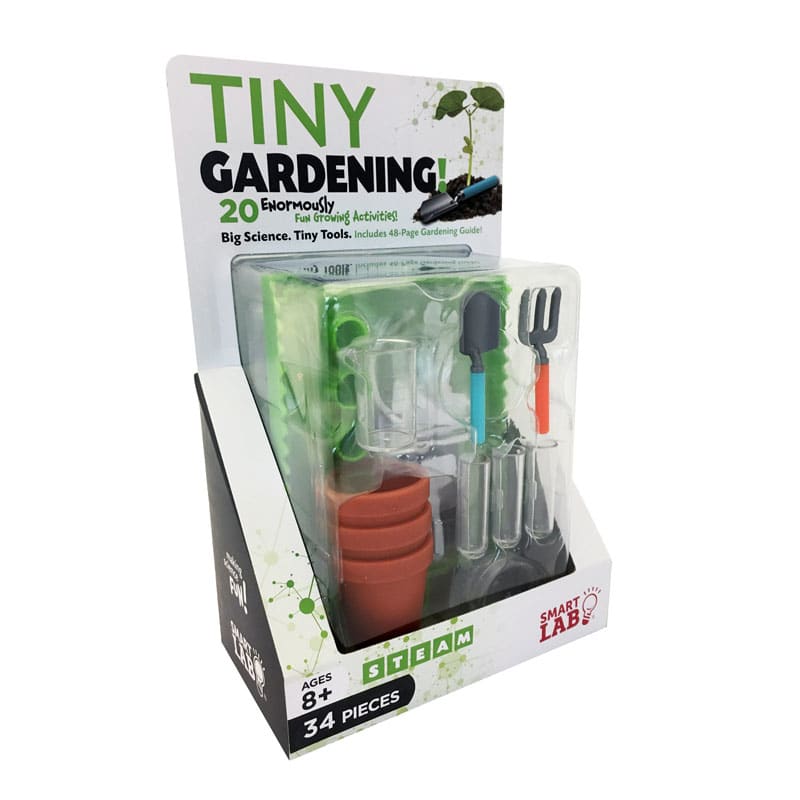- Bargain Items are brand-new products that have been dinged, dented, or scuffed, but are otherwise in usable condition.
- Bargain Items have limited inventory, and they are only reserved for you when checkout is completed.
- Bargain Items are non-returnable and non-refundable.
With some adult help getting it assembled, a student can follow the directions in the guide and create a variety of gardening activities in this one kit. Also, it's so adorable! You will have to get your own seeds and soil, which means you can choose what to grow. The various filters, covers, containers and tools are all useable. The academic value comes in documenting germination and growth, following directions in the guide, trying different seeds, learning about soil, capillary action, and more. I like that this is not a one-and-done kit. The built greenhouse measures about 5" long, 4" wide and 3.5" high. It is well constructed, and the roof even has little vents to prop it open. ~Sara


